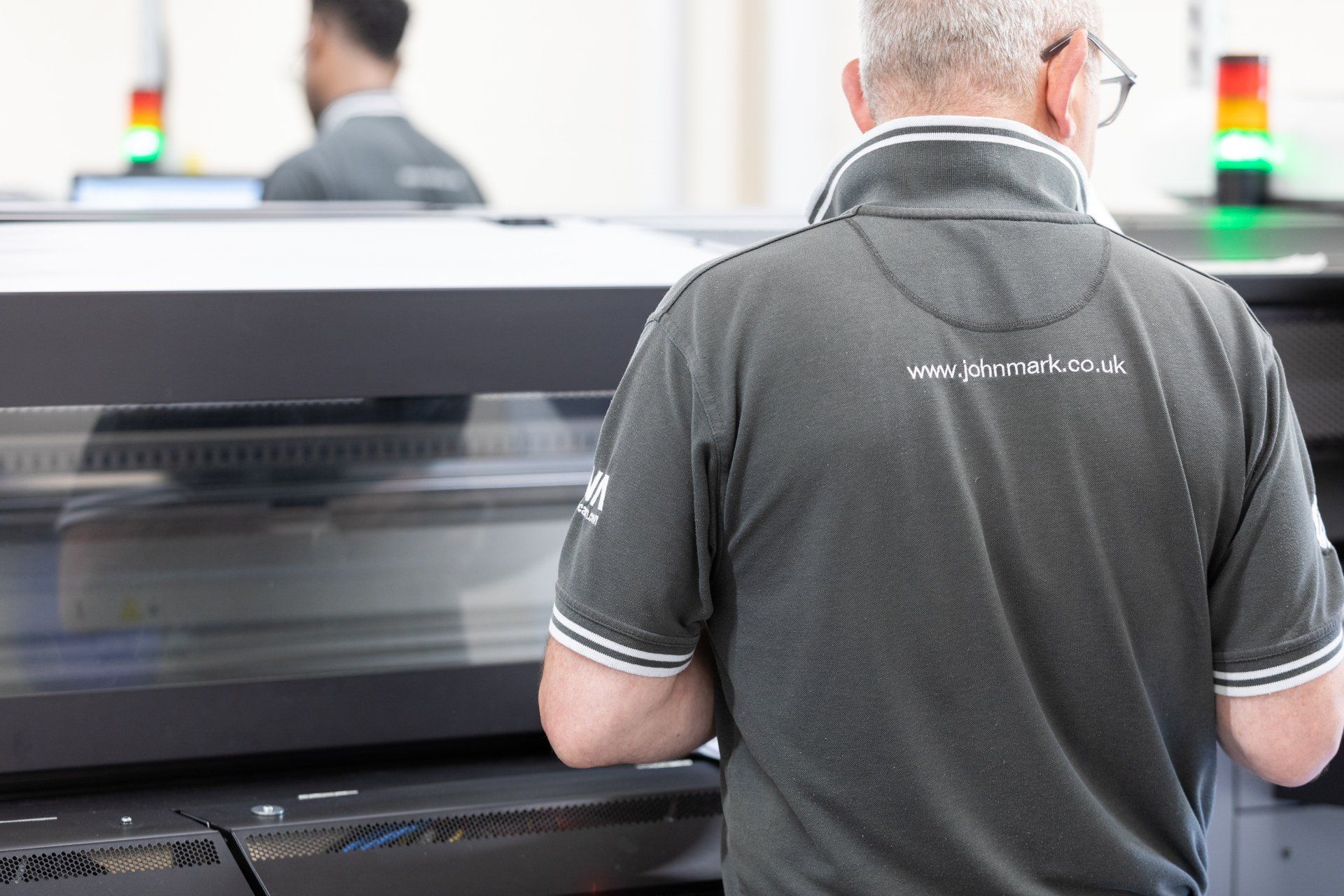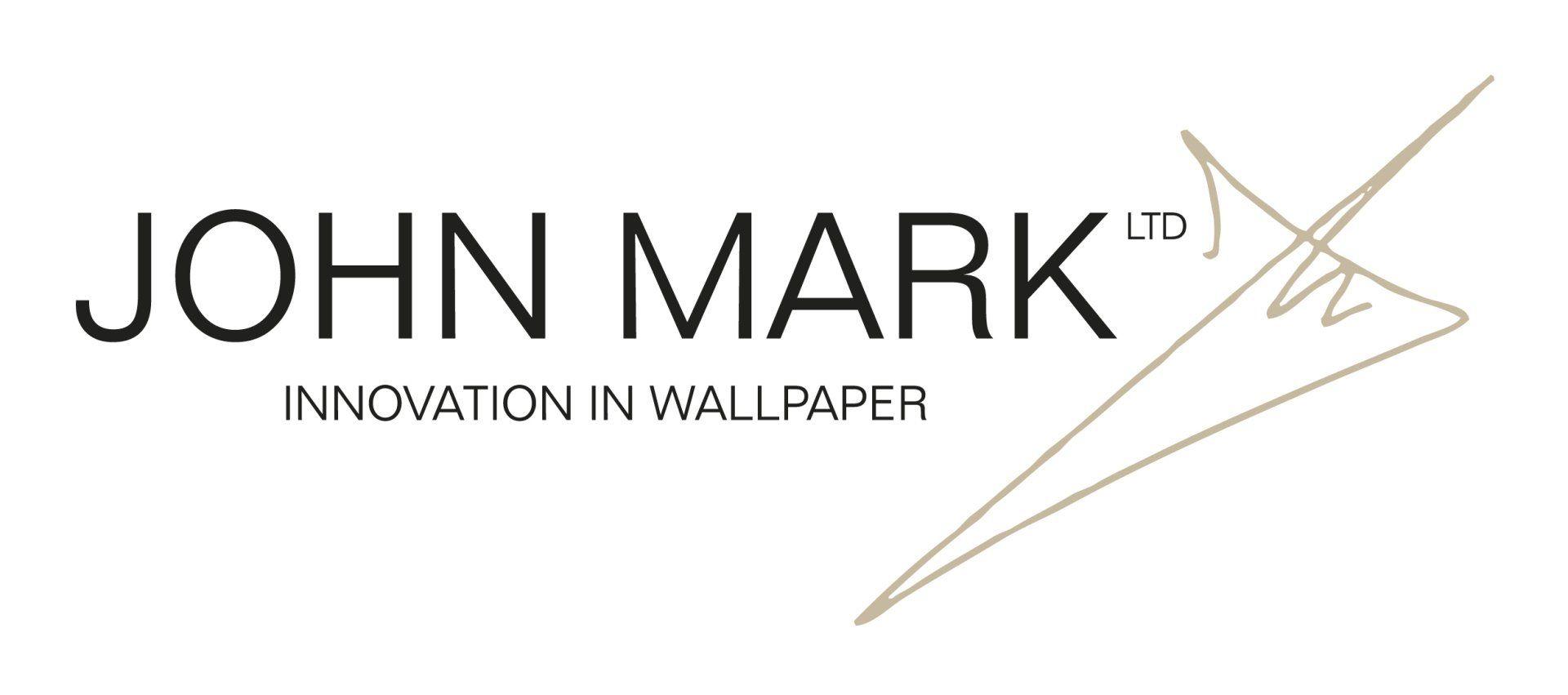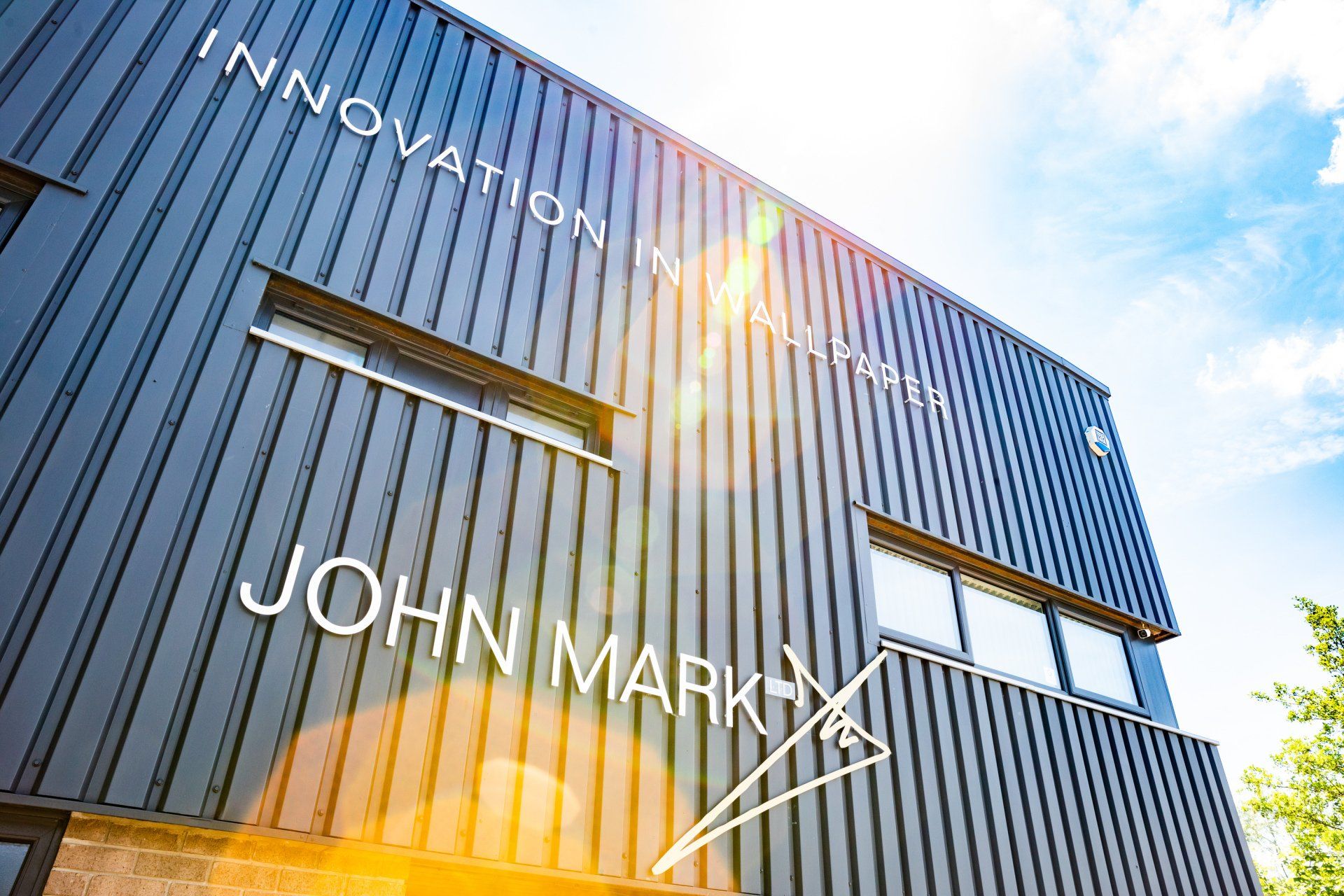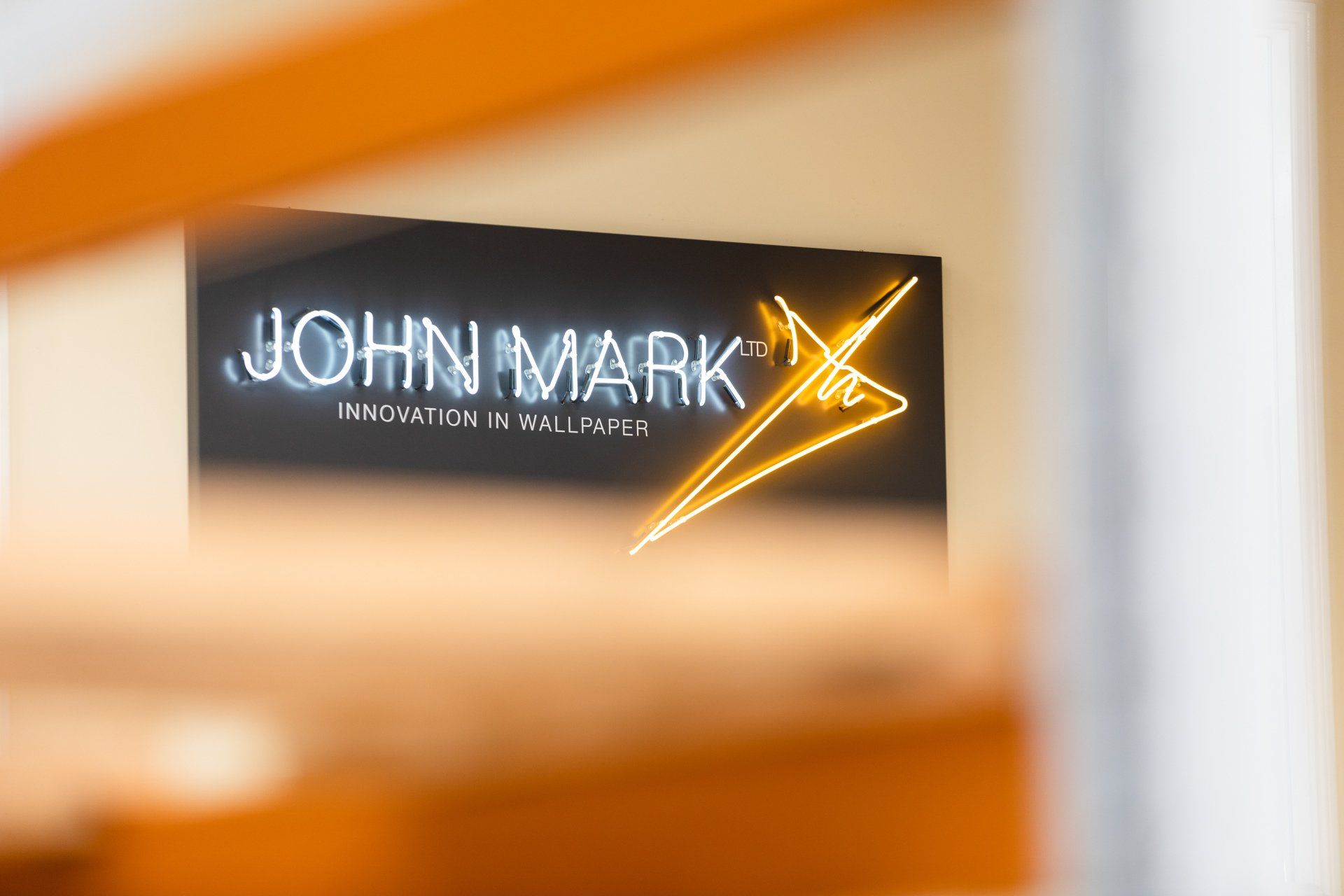Hitting the Mark By Melissa Donovan - Digital Output Magazine
Unrivaled Potential with Digitally Printed Wallcoverings

Above: John Mark uses printers from HP and media from Ahlstrom-Munksjö to create custom wallpaper designs for clients like Madeaux Ltd. Photo credit: Anders Gramer.
Wallpaper was traditionally manufactured using conventional technologies such as flexography, gravure, screenprinting, surface printing, and traditional block printing. Flexography and rotary screenprinting are still used today, especially for long runs of one design, however digital print is disrupting the wallpaper industry.
Specifically, it creates an opportunity for more affordable options. This in turn expands the customer demographic from perspective buyers like interior designers and architects purchasing one-of-a-kind patterns for corporate offices and retail spaces to homeowners looking for bespoke designs once only accessible to the wealthy.
Unrivaled Potential
John Mark Watson, managing director, John Mark Ltd., realized the “unrivaled potential that digital print offers” when he started John Mark in May 2012. A fourth generation wallcovering manufacturer, Watson was aware of the established history behind conventional wallcovering printing methods, as he began his career in his family’s analog wallpaper printing company.
“I’m passionate about producing top quality, innovative wallcoverings and am very hands on in the production side of the business as I particularly enjoy the process of turning stunning designs into beautiful wallcovering products,” explains Watson.
The passion shows right down to its geographic location. Lancashire, England, home of the company’s 11,500 square foot factory, is the birthplace of rotary printed wallcoverings. A staff of 12 serves customers in the European, U.K, and U.S. wallcovering markets.
Client requests range from one or two wall murals to orders of up to 120,000 printed square feet. These larger customers are what Watson refers to as “editors” with in-house design teams that create full wallcovering collections that match or complement their fabric designs. The editors carry their own stock of wallcovering rolls, storing it in warehouses and distributing to customers worldwide.
On the smaller end of the spectrum, John Mark works with hotels on bespoke commercial projects that may include single or multiple wall murals. Watson says a new customer has emerged via social media, specifically Instagram. “These customers receive orders, send us the details, and then we print the order and dispatch it to the consumer. Again, this is where digital really comes into its own, since these orders tend to be smaller and might only equate to around 150 square feet.”
Close Relationships
John Mark focuses on digitally printed wallcoverings, both standard and wide width printed product. The printing is completed with HP Inc. devices. Six 126-inch HP Latex 1500 devices and three 64-inch HP Latex 570 printers. Watson notes he has used HP printers since beginning the company back in 2012.
Part of providing its customer base with high-quality print involves the media selection. Watson formed a close relationship with its primary non-woven supplier, Ahlstrom-Munksjö.
“Ahlstrom-Munksjö partners with us to provide the product and the quality that we are seeking with their sales and marketing team, which is always looking to innovate with sustainability and quality in mind,” notes Watson.
Particularly, John Mark uses WallStar Digital from Ahlstrom-Munksjö. The brand includes a range of PVC-free non-wovens optimized for digital printing with variations in structure and surface effects. Watson points to two products in the portfolio as ones commonly used—Satin 180 and Matte 147.
Satin 180 is a 180 gsm semi-gloss media. Much of John Mark’s work is printed on this because it features a smooth, semi-glossy coated base with a good basis weight for high-end wallcoverings. “It gives an excellent color gamut and particularly good depth of color on very dark grounds,” adds Watson.
Also part of the WallStar Digital collection is Matte 147, which is a 147 gsm uncoated non-woven with an ultra-matte surface aspect. Since the material is uncoated, it absorbs more color, resulting in a very flat, matte final print.
According to Watson, the company’s customers create designs with the non-woven texture in mind and it is up to the staff at John Mark to take those designs and ensure they appear exactly as the client intended. “It is important that regular color calibration and profiles are carried out to maintain the color consistency from one order to the next.”
Made to Order
One customer that trusts John Mark with replicating its design intentions is Richard Smith, a well-known designer in the textile and wallcovering space who owns internationally recognized brand Madeaux Ltd.
“When Richard started designing wallcoverings four years ago, he realized that the cost of print cylinders was far too high to make conventional analog printing a viable option for someone designing and selling his own wallcoverings for the first time. He wanted to ‘dip his toe in the water’ to begin with and didn’t want to carry any stock. By going down the digital route, he was able to get started by supplying clients on a ‘made to order’ basis,” explains Watson.
Madeaux Ltd.’s wallcoverings are printed on HP L1500 printers. Each design in the finished collection uses a specific material from the Ahlstrom-Munksjö WallStar Digital portfolio depending on its aesthetic needs.
For example, Satin 180 gsm is used to provide the richness and depth of color required for Aviary Midnight Forest. Stones of Venice Endpaper resembles a polished marble, so Satin 180 was chosen for this design too since the features provide the printed product with a marble-like finish.
Two designs, Pivoine Aqua and Rose Trellis Cream, are commonly used in bedroom settings. Here, Antique 147 a light, fibrous matte 147 gsm material was selected to provide a soft, traditional feel. “Since this substrate is more absorbent, it allows the ink to soak into the base, resulting in subtle, muted colors,” explains Watson.
When design files from Madeaux Ltd. are sent to John Mark, it usually takes a few days to print and send out. Typical order sizes range from one feature wall to a number of hotel bedrooms that total several thousand square feet. Without advancements in digital printing, designing and selling the Madeaux Ltd. wallcoverings would be difficult. “The service we offer means our clients are able to produce wallcoverings without the high initial cost outlay of print cylinders, prohibitive minimum order quantities, and long lead times that are associated with analog printed wallcoverings,” shares Watson.
Smith is quick to agree. “I wish I had gone into designing and selling wallcoverings much earlier with Madeaux Ltd., it is so much easier than producing fabrics. Working with a company like John Mark has made my life much more enjoyable because it allows me to do what I am best at doing—designing,” he exclaims.
Full Advantage
Watson leverages his knowledge in the analog world to use digital printing technologies to the full advantage. The company’s success is illustrated by satisified customers like Madeaux Ltd. that thrive thanks to advancements in digital printing.
Mar2021, Digital Output
https://digitaloutput.net/hitting-the-mark/
New Paragraph
Contact us
Find us
84 Bison Place Moss Side Ind Est, Leyland, PR26 7QR
Business hours
- Mon - Fri
- -
- Sat - Sun
- Closed



